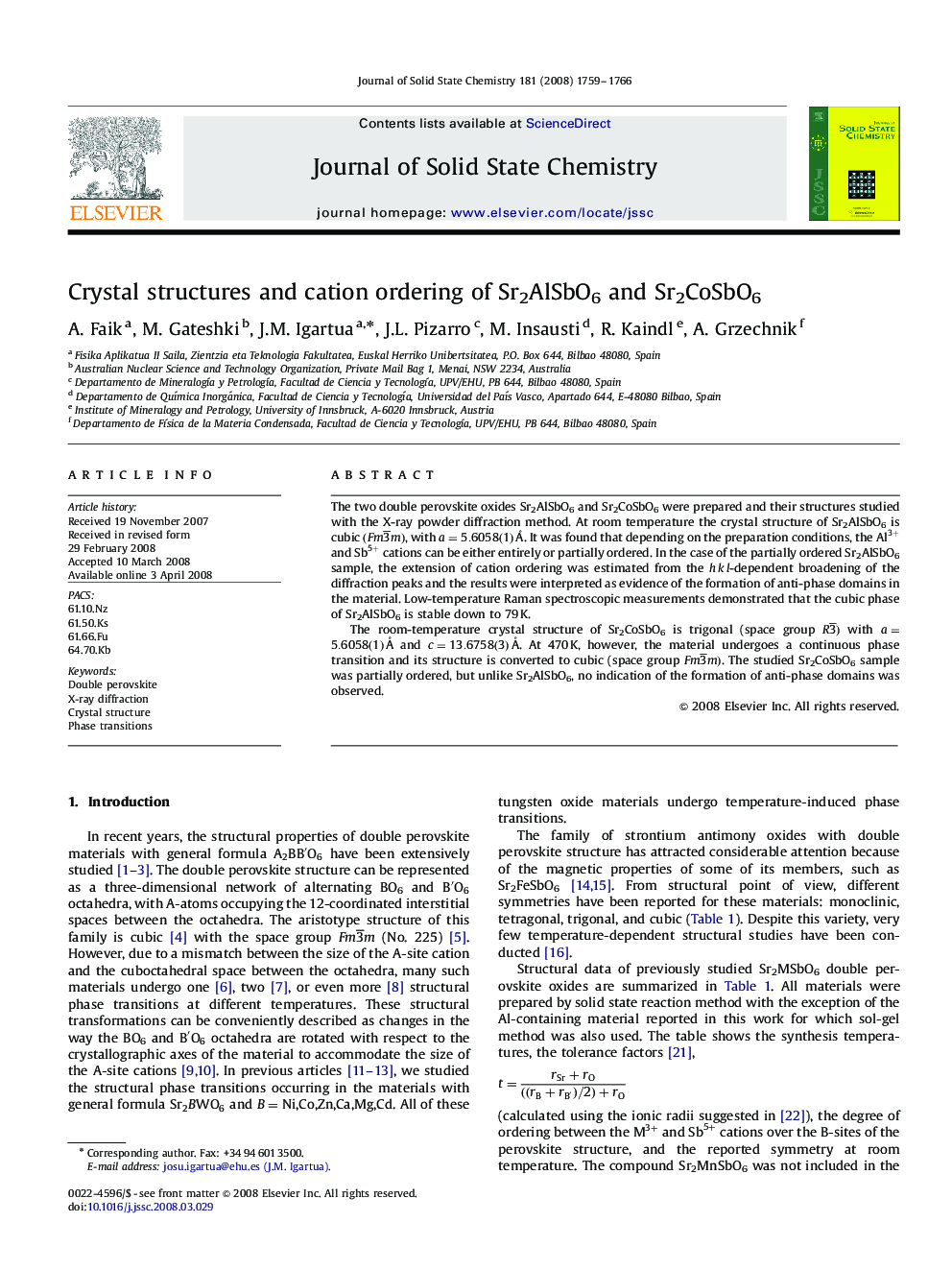| کد مقاله | کد نشریه | سال انتشار | مقاله انگلیسی | نسخه تمام متن |
|---|---|---|---|---|
| 1332152 | 979032 | 2008 | 8 صفحه PDF | دانلود رایگان |

The two double perovskite oxides Sr2AlSbO6 and Sr2CoSbO6 were prepared and their structures studied with the X-ray powder diffraction method. At room temperature the crystal structure of Sr2AlSbO6 is cubic (Fm3¯m), with a=5.6058(1)A˚. It was found that depending on the preparation conditions, the Al3+Al3+ and Sb5+Sb5+ cations can be either entirely or partially ordered. In the case of the partially ordered Sr2AlSbO6 sample, the extension of cation ordering was estimated from the hkl-dependent broadening of the diffraction peaks and the results were interpreted as evidence of the formation of anti-phase domains in the material. Low-temperature Raman spectroscopic measurements demonstrated that the cubic phase of Sr2AlSbO6 is stable down to 79 K.The room-temperature crystal structure of Sr2CoSbO6 is trigonal (space group R3¯) with a=5.6058(1)A˚ and c=13.6758(3)A˚. At 470 K, however, the material undergoes a continuous phase transition and its structure is converted to cubic (space group Fm3¯m). The studied Sr2CoSbO6 sample was partially ordered, but unlike Sr2AlSbO6, no indication of the formation of anti-phase domains was observed.
Williamson–Hall plot of the diffraction peaks in Sr2AlSbO6, samples 1 and 2, and in Sr2CoSbO6. ββ denotes the integral breadth corrected for instrumental effects, θθ is the diffraction angle. It can be seen that in the case of sample 1, ββ of the superstructure reflections (solid squares) are clearly larger than those of the rest of the peaks. It was found that depending on the preparation conditions, the Al3+Al3+ and Sb5+Sb5+ cations can be either entirely or partially ordered. In the case of the partially ordered Sr2AlSbO6 sample, the extension of cation ordering was estimated from the hkl-dependent broadening of the diffraction peaks and the results were interpreted as evidence of the formation of anti-phase domains in the material. In the case of Sr2CoSbO6, despite the high synthesis temperature (1770 K), the degree of ordering is relatively low. This can be explained by the small difference between the radii of the B-site cations. Another interesting fact is that the sample-related broadening of the diffraction peaks of Sr2CoSbO6 does not show any significant hkl-dependence. This suggests that no extended anti-phase boundaries are formed within the crystallites and the observed low degree of ordering is caused by randomly distributed anti-site defects. In the case of trigonal perovskites the effect of the cation ordering on the peak widths cannot be visualized easily as in the case of cubic perovskites due to the overlapping of the order-related reflections with sub-cell reflections.Figure optionsDownload as PowerPoint slide
Journal: Journal of Solid State Chemistry - Volume 181, Issue 8, August 2008, Pages 1759–1766